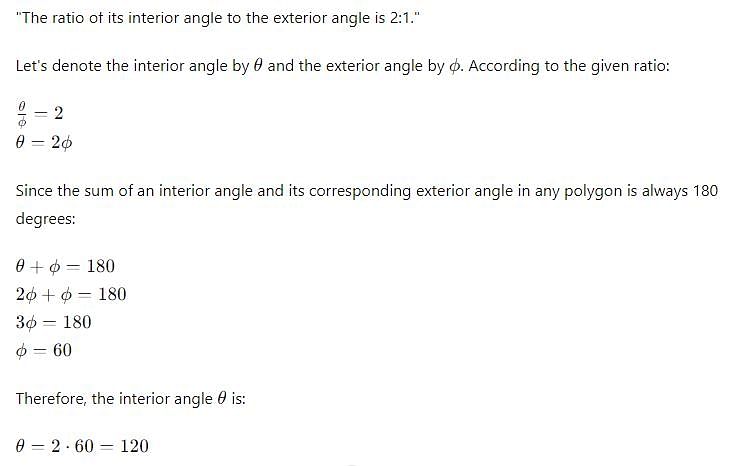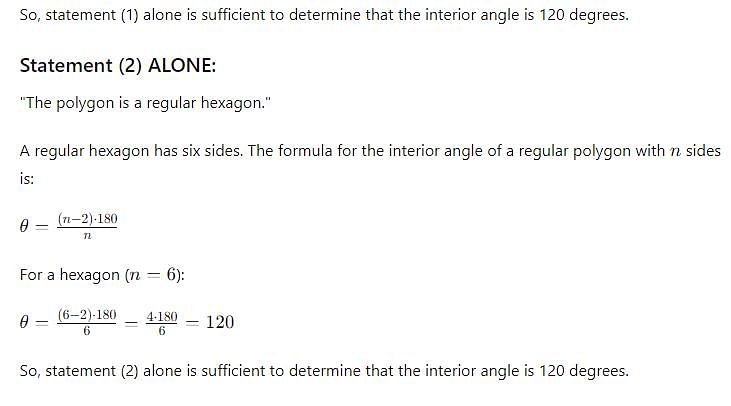Test: Data Sufficiency - 3 - GMAT MCQ
10 Questions MCQ Test Data Insights for GMAT - Test: Data Sufficiency - 3
Find the area of a right angle triangle whose base is 12 inches.
1. The hypotenuse is 13 inches.
2. The perpendicular height of the triangle is one less than half its base.
1. The hypotenuse is 13 inches.
2. The perpendicular height of the triangle is one less than half its base.
Is the number a prime number?
1. The number is divisible by a prime factor.
2. The number is positive
1. The number is divisible by a prime factor.
2. The number is positive
| 1 Crore+ students have signed up on EduRev. Have you? Download the App |
Find the direction in which the parabola y = ax2 + bx - 2 is facing.
1. a = b
2. a < 0
1. a = b
2. a < 0
Find the equation of a line.
1. Its x and y intercept is 2 and -2 respectively.
2. The slope of the line is 1.
Determine the size of an interior angle of the polygon.
1. The ratio of its interior angle to the exterior angle is 2:1.
2. The polygon is a regular hexagon
Determine the value of t.
1. 2t + 6s = 8
2. t/2 - 2 = - 3s/4
Find the percentage change in the volume of cylinder.
1. The diameter is increased by 20%.
2. The height is increased by 21%.
Determine the equation of the circle passing through (-4,-2).
1. (1,-1) lies in the circle.
2. The center of the circle is the origin.
|
19 videos|21 docs|16 tests
|



















